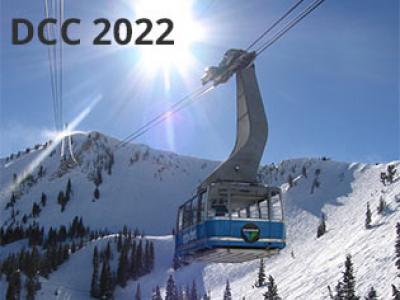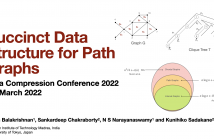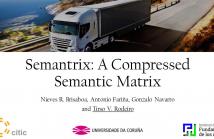
- Read more about Computing Matching Statistics on Repetitive Texts
- 2 comments
- Log in to post comments
- Categories:
 89 Views
89 Views
- Read more about On dynamic bitvector implementations
- 2 comments
- Log in to post comments
Bitvectors that support rank and select queries are the workhorses of succinct data structures, implementations of which are now widespread, for example, in bioinformatics software. To date, however, most bitvector implementations are static, thus forcing more complex data structures built from them to be static too. In this paper we explore dynamic bitvectors, which, in addition to rank and select queries, also support update operations, specifically: insert, remove, and modify. We first provide several practical optimizations to the recent B-tree based bitvectors of Prezza (Proc.
- Categories:
 135 Views
135 Views
- Read more about Succinct Data Structure for Path Graphs
- Log in to post comments
We consider the problem of designing space-efficient data structures for unlabelled path graphs with n vertices while supporting basic navigational queries such as degree, adjacency, and neighborhood queries efficiently. We provide two solutions for this problem. Our first data structure is succinct and occupies n log n+o(n log n) bits while answering adjacency query in O(log n) time, and neighborhood and degree queries in O(d log^2 n) time where d is the degree of the queried vertex. Our second data structure answers all these queries faster at the expense of slightly more space.
- Categories:
 36 Views
36 Views
- Read more about Semantrix: A Compressed Semantic Matrix
- 3 comments
- Log in to post comments
We present a compact data structure to represent both the duration and length of homogeneous segments of trajectories from moving objects in a way that, as a data warehouse, it allows us to efficiently answer cumulative queries. The division of trajectories into relevant segments has been studied in the literature under the topic of Trajectory Segmentation. In this paper, we design a data structure to compactly represent them and the algorithms to answer the more relevant queries.
- Categories:
 158 Views
158 Views
- Read more about Bitvectors with runs and the successor/predecessor problem
- 2 comments
- Log in to post comments
The successor and predecessor problem consists of obtaining the closest value in a set of integers, greater or smaller than a given value. This problem has interesting applications, like the intersection of inverted lists. It can be easily modeled by using a bitvector of size n and its operations rank and select. However, there is a practical approach [1], which keeps the best theoretical bounds, and allows to solve successor and predecessor more efficiently.
- Categories:
 232 Views
232 Views